Best Teens Adventure (1914–1923)
By:
September 22, 2013
NOTE: This post has been superseded by HILOBROW’s 100 Best Adventures of the Teens page.
The Best Adventure series of posts will list my favorite 21 adventure novels from each of the 20th Century’s first eight (socio-cultural) decades. Plus, I kicked off the series with a list of the Top 32 adventures from the 19th Century; in total, then, I aim to list 200 of my all-time favorite adventures.
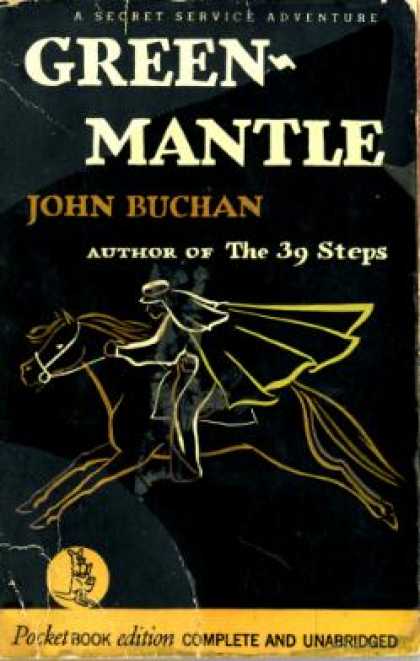
JOSH GLENN’S *BEST ADVENTURES* LISTS: BEST 250 ADVENTURES OF THE 20TH CENTURY | 100 BEST OUGHTS ADVENTURES | 100 BEST RADIUM AGE (PROTO-)SCI-FI ADVENTURES | 100 BEST TEENS ADVENTURES | 100 BEST TWENTIES ADVENTURES | 100 BEST THIRTIES ADVENTURES | 75 BEST GOLDEN AGE SCI-FI ADVENTURES | 100 BEST FORTIES ADVENTURES | 100 BEST FIFTIES ADVENTURES | 100 BEST SIXTIES ADVENTURES | 75 BEST NEW WAVE SCI FI ADVENTURES | 100 BEST SEVENTIES ADVENTURES | 100 BEST EIGHTIES ADVENTURES | 75 BEST DIAMOND AGE SCI-FI ADVENTURES | 100 BEST NINETIES ADVENTURES (in progress) | 1994 | 1995 | 1996 | 1997 | 1998 | 1999 | 2000 | 2001 | 2002 | 2003 | NOTES ON 21st-CENTURY ADVENTURES.
20 ADVENTURE THEMES AND MEMES: Index to All Adventure Lists | Introduction to Adventure Themes & Memes Series | Index to Entire Series | The Robinsonade (theme: DIY) | The Robinsonade (theme: Un-Alienated Work) | The Robinsonade (theme: Cozy Catastrophe) | The Argonautica (theme: All for One, One for All) | The Argonautica (theme: Crackerjacks) | The Argonautica (theme: Argonaut Folly) | The Argonautica (theme: Beautiful Losers) | The Treasure Hunt | The Frontier Epic | The Picaresque | The Avenger Drama (theme: Secret Identity) | The Avenger Drama (theme: Self-Liberation) | The Avenger Drama (theme: Reluctant Bad-Ass) | The Atavistic Epic | The Hide-And-Go-Seek Game (theme: Artful Dodger) | The Hide-And-Go-Seek Game (theme: Conspiracy Theory) | The Hide-And-Go-Seek Game (theme: Apophenia) | The Survival Epic | The Ruritanian Fantasy | The Escapade
This is the third post in the series. Here you’ll find a list of my Top 21 Adventures from the Nineteen-Teens (1914–1923).
ALSO SEE: Radium Age 100: The Best Science Fiction Novels Published from 1904–33
By the way, it’s worth mentioning that all titles listed here are in public domain, except works published in 1923, which may be protected by copyright. According to the provisions of the 1998 Sonny Bono Act, on January 1, 2019 all works published in 1923 will enter public domain — unless Congress extends once again the length of copyright.
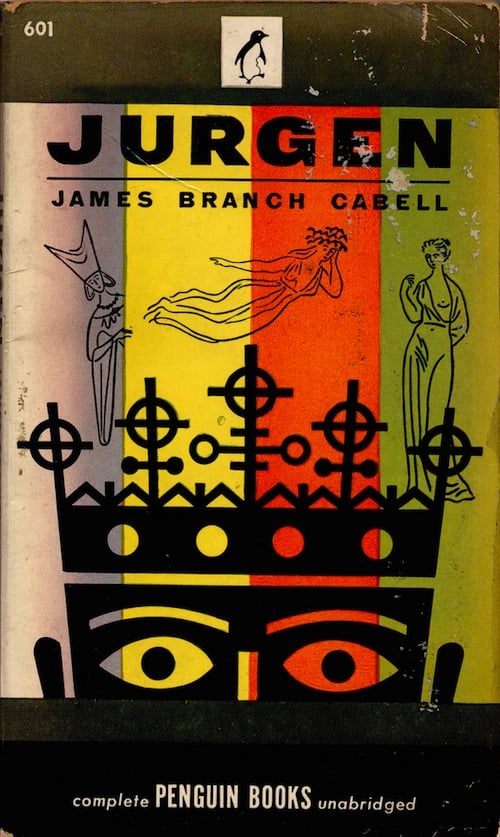
Fans of highbrow lit and Great American Novels — think The Great Gatsby, An American Tragedy, A Farewell to Arms, U.S.A., Call It Sleep, Absalom, Absalom! — celebrate the Modernist era that begins circa 1914, i.e., with the outbreak of WWI. Sinclair Lewis called the era America’s second “coming of age,” a period of maturation when poetry, fiction, and drama broke with conventions and achieved unparalleled creative achievement. It was indeed an extraordinary era in literature, and the novels mentioned are great. But we should be wary of the rhetoric of maturity vs. immaturity; it’s the (liberal, capitalist) dominant discourse’s way of pooh-poohing utopian, romantic, idealistic ideas and visions — which are depicted as silly, adolescent.
During the socio-cultural decade of 1914–1923, America and Western Europe lost its (19th-century) faith in progress and the perfectibility of man; four years of slaugher in the trenches of the Western Front purged that religious delusion. For highbrows, that faith was replaced with a cynicism preoccupied with dislocation, fragmentation, and dehumanization. F. Scott Fitzgerald’s demographic cohort saw themselves as “a new generation,” as Fitzgerald would write in his debut novel, This Side of Paradise (1920), one that had “grown up to find all Gods dead, all wars fought, all faiths in man shaken.” In his autobiographical Exile’s Return, Fitzgerald’s contemporary Malcolm Cowley would recall that whereas their immediate elders “had once been rebels, political, moral, artistic or religious,” the postwar generation “avoided issues and got what we wanted in a quiet way, simply by taking it.”
“They” had been rebels: they wanted to change the world, be leaders in the fight for justice and art, help to create a society in which individuals could express themselves. “We” were convinced at the time that society could never be changed by an effort of the will.
So much for highbrows. Lowbrow authors, however — Edgar Rice Burroughs, say, or Rafael Sabatini, or Max Brand — continued to write adventure stories in which an effort of the will does matter, in which rebellion against the forms and norms of an oppressive social order is a worthwhile endeavor whether or not it gets results. Their adventures are, without a doubt, adolescent… and deeply enjoyable.
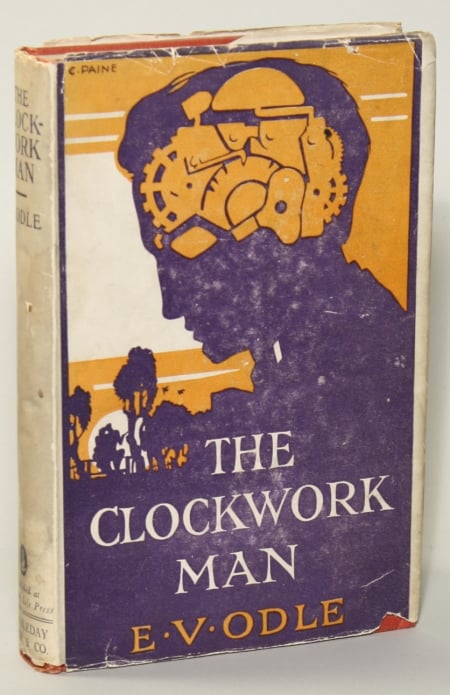
And then there are the high-lowbrow adventure writers of the 1904–1913 era: André Gide, say, or G.K. Chesterton, Jack London, Karel Čapek, E.V. Odle, even H. Rider Haggard. Here we find litterateurs who aren’t cynical, but ironic. Theirs is a mature philosophical irony that might be detached but it’s not disaffected. In their adventure novels, we discover — to our delight — “adolescent” adventure themes and memes engaged in a dialectical high-wire act with postwar Weltschmerz.
When LeRoy L. Panek writes, in The Special Branch: The British Spy Novel, 1890–1980, that John Buchan “bent the materials of the boy’s adventure tale to the service of espionage,” he’s pointing out a similar dialectical tension, which makes Buchan so great. Ditto Brian Aldiss’s lament (in Billion Year Spree: The True History of Science Fiction) that “It is as difficult to imagine Franz Kafka, Aldous Huxley, Karel Čapek, et al., submitting their works for serialization in Amazing Stories or Weird Tales, as it is to think of E.E. Smith, creator of the Grey Lensman, as a moulder of Western thought. The gulf between two similar sorts of reading matter has become complete.”
Not any longer! HILOBROW is bridging that gulf. Here’s my list of the Top 21 Adventures from the Nineteen-Teens (1914–1923). Enjoy! And please leave feedback; these lists are very much subject to revision.
As in each post from this series, I’ve appended a list of 29 second-tier favorites — for a grand total of 50 Top Adventures of the Teens. Plus a third-tier list that features, among other thing, many obscure adventures. These ought not to be thought of as “third-rate” (I wouldn’t mention them if they weren’t worth reading) but instead as Most Deserving of Rediscovery. Please leave suggestions and feedback.
In chronological order:
- 1914. Edgar Rice Burroughs’s Radium Age science fiction adventure At the Earth’s Core. A mining engineer discovers — thanks to his “iron mole” machine, that the Earth is hollow; at its center is Pellucidar, a land (lit by a miniature Sun) in which stone-age humans are dominated by intelligent flying reptiles… and in which prehistoric creatures roam freely. NB: H.P. Lovecraft was a fan; check out his 1931 adventure At the Mountains of Madness.
- 1914. André Gide’s Les caves du Vatican (in English: Lafcadio’s Adventures, or The Vatican Cellars) is best described as an ironic homage to the adventure novel. Its protagonist, Lafcadio, a would-be Nietzschean superman who reads only adventures like Aladdin and Robinson Crusoe, stumbles upon a plot involving the Pope.
- 1914. Arthur Conan Doyle’s Sherlock Holmes adventure The Valley of Fear. I try to avoid mysteries on these lists, because in most cases they’re not adventures, but the fourth and final Sherlock Holmes novel fits the bill. A coded message, Professor Moriarty, and a backstory based on the supposedly real-life exploits of the Molly Maguires in Pennsylvania!
- 1915. John Buchan’s Richard Hannay adventure The Thirty-Nine Steps. The best hunted-man thriller (or “shocker,” to use the author’s term) ever, at least until Geoffrey Household’s Rogue Male. When mining engineer Richard Hannay discovers the existence of a ring of German spies who have stolen British plans for the outbreak of war, he is framed for murder. Fleeing to Scotland, he must elude not only spies but the police.
- 1915. Charlotte Perkins Gilman’s utopian Radium Age science fiction novel Herland. A utopian novel describing an all-female society (with reproduction by parthenogenesis) in which women’s essential quality of nurturing creates a peaceful and rationally ordered world. Mostly exposition, but there are one or two chase scenes — in which the women capture the rogue males. (Read it on HiLobrow.)
- 1915. Frances Hodgson Burnett’s YA adventure The Lost Prince. The author of the sentimental children’s classics Little Lord Fauntleroy, A Little Princess, and The Secret Garden also wrote one of the best Ruritanian-type yarns ever. Young Marco Loristan and his crippled urchin friend “The Rat” are entrusted with a secret mission: traveling across Europe with a message for exiled Samavian revolutionaries.
- 1915. Rafael Sabatini’s sea-going historical adventure The Sea Hawk is set in the late 16th century. Sold into slavery by his fiancée’s villainous brother, Cornish gentleman Oliver Tressilian is liberated by Barbary pirates — i.e., Muslim corsairs — among whom he makes a name for himself as Sakr-el-Bahr, the Hawk of the Sea. Tressilian then returns to England for revenge. NB: The Errol Flynn movie was supposed to be an adaption of this novel… but it’s quite different.
- 1916. John Buchan’s Richard Hannay adventure Greenmantle is set during WWI. Continuing his undercover work against the Germans and their allies the Turks, Hannay investigates rumors of an uprising in the Muslim world — cf. his 1910 adventure Prester John. Here we meet for the first time Hannay’s great characters Sandy Arbuthnot (master of disguise), Peter Pienaar (South African hunter), and John Blenkiron (dyspeptic, anti-fascist American industrialist). Chases, clues, and battles galore.
- 1919. James Branch Cabell’s comical fantasy adventure Jurgen, A Comedy of Justice. In search of courtly love, the protagonist — a poet, who is allowed to relive a year of his youth — journeys through fantastic realms. The novel’s sexual content caused a storm of controversy. Aleister Crowley was a fan, and Robert Heinlein patterned Stranger in a Strange Land after it.
- 1919. John Buchan’s Richard Hannay adventure Mr. Standfast. Near the end of WWI, Hannay is recalled from active duty on the Western Front to go undercover — as a pacifist! — in search of a German agent at large in Britain. John Blenkiron and Peter Pienaar (now an ace pilot) reappear; and we meet their beautiful, brave comrade Mary Lamington.
- 1919. Max Brand’s (Frederick Faust) Western adventure The Untamed relates the story of archetypal western hero Whistling Dan Barry’s evolution from innocence to experience. Considered a classic in the genre, the book is Max Brand’s first book-length Western. The author eventually wrote more than 500 novels, only a few of them very good.
- 1919. H. Rider Haggard’s Radium Age science fiction adventure When the World Shook. When adventurers Bastin, Bickley, and Arbuthnot are marooned on a South Sea island, they discover two Atlanteans in a state of suspended animation. One of the awakened sleepers, Lord Oro, is a superman. The other is Oro’s sexy daughter, Yva. Using astral projection, Lord Oro determines whether or not he should once again employ an infernal chthonic machine to drown the worthless human race! (Reissued by HiLoBooks.)
- 1920/1921. Karel Čapek’s Radium Age science fiction play R.U.R.: Rossum’s Universal Robots expressed the Czech litterateur’s fear of social disaster and the unlimited power of corporations — and gave the world the term “robot,” which the author’s brother, Joseph, coined (from the Czech for “corvée labor”) to describe manufactured, exploited humanoids.
- 1921. John Dos Passos’s WWI adventure Three Soldiers, in which an Italian American, an Indiana farm boy, and a Harvard graduate become disillusioned in different ways. According to H.L. Mencken: “At one blast it disposed of oceans of romance and blather. It changed the whole tone of American opinion about the war; it even changed the recollections of actual veterans of the war.” Very un-romantic, but a terrific read.
- 1921. Ben Hecht’s comical adventure Erik Dorn. Before he became the Hollywood screenwriter famous for Scarface, The Front Page, Some Like it Hot, and His Girl Friday, Hecht wrote a popular novel in which a cynical journalist abandons his wife (and mistress) for the excitement of revolutionary Europe! Call it an ironic homage to the genre.
- 1921. Yevgeny Zamyatin’s Radium Age science fiction adventure We. Circulated in samizdat for years — in which form it influenced George Orwell’s Nineteen Eighty-Four — this dystopian novel extrapolates from the rhetoric of communists who advocated extending Taylorism, Fordism, and other (capitalist) scientific-management techniques beyond the factory into all spheres of life. It’s set in a totalized social order whose citizens eat, sleep, work, and even make love like clockwork.
- 1922. Cicely Hamilton’s Radium Age science fiction adventure Theodore Savage. When war breaks out in Europe, British civilization collapses overnight. The ironically named protagonist must learn to survive by his wits in a new Britain… one where science and technology swiftly come to be regarded with superstitious awe and terror. (Reissued by HiLoBooks.)
- 1922/1926. Franz Kafka’s posthumously published Das Schloss (The Castle). The protagonist, K., struggles for unknown reasons to gain access to the mysterious authorities of a castle who govern the village. Sardonic inversion of an adventure — the protagonist can’t get started. Brian Aldiss writes, of Kafka’s oeuvre: “the baffling atmosphere, the paranoid complexities, the alien motives of others, make the novels a sort of haute sf.”
- 1922. John Buchan’s adventure Huntingtower, published between the third and fourth Richard Hannay novels, is the first of several adventures featuring one of the most unlikely heroes ever, retired Scottish grocer Dickson McCunn. When an exiled Russian noblewoman is imprisoned — in a Scottish tower — by Bolshevik agents, McCunn and unsuccessful poet John Heritage, aided by a troupe of Glasgow slum children, ride to her rescue.
- 1922. Karel Čapek’s Radium Age science fiction adventure The Absolute at Large describes how a near-future Greatest War (during which worldwide civilization collapses) is sparked by the manufacture of an atomic reactor whose unintended byproduct is the spiritual essence that permeates every particle of matter: i.e., God. An absurdist tour-de-force.
- 1923. E.V. Odle’s Radium Age science fiction adventure The Clockwork Man. Years from now, advanced beings will implant devices into our heads. At the cost of a certain amount of agency, this technology will permit us to move unhindered through time and space, and to live perfectly regulated lives (hello, Singularity). However, if one of these devices should ever go awry, a being from the future might turn up in the 1920s. (Reissued by HiLoBooks.)
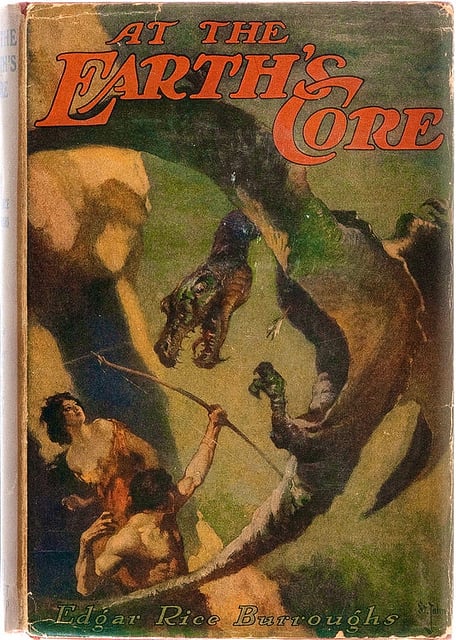
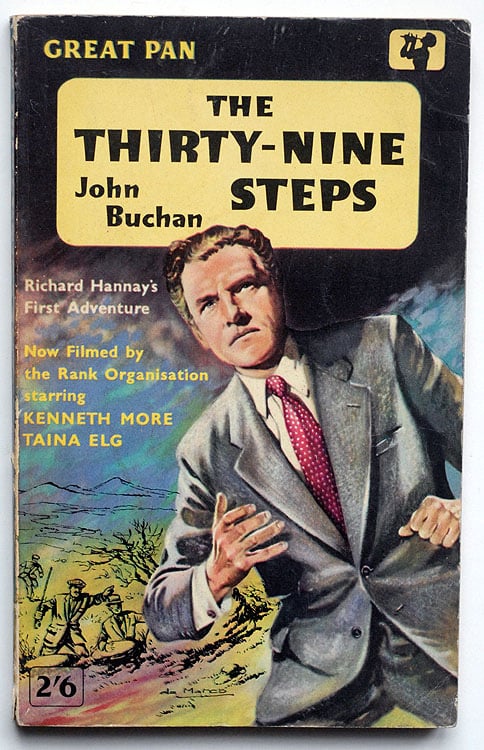
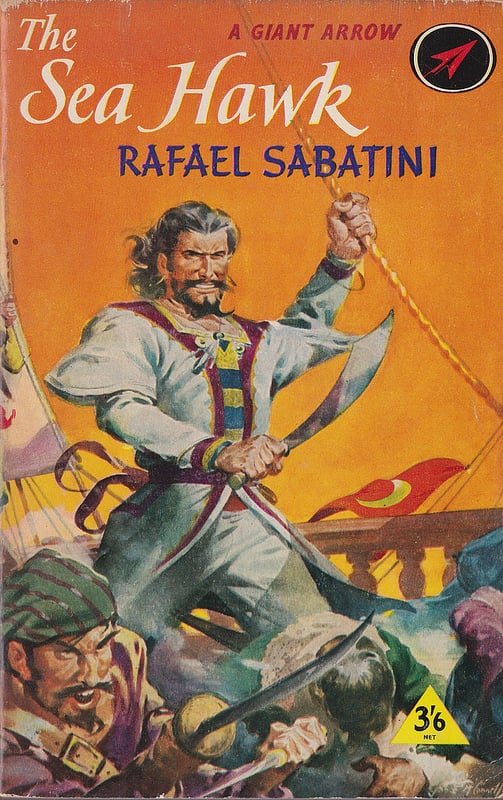
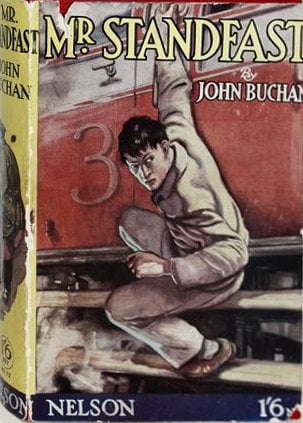
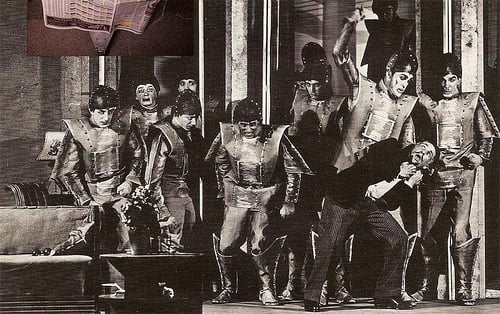
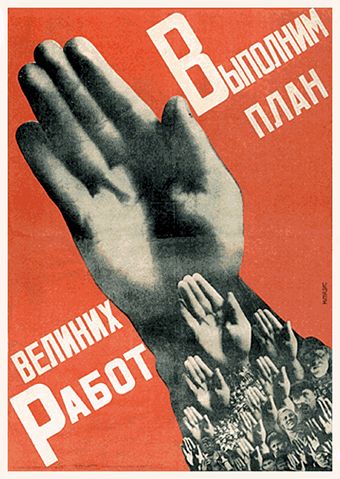
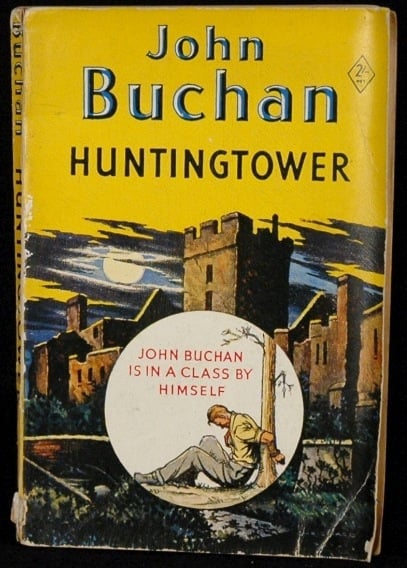
Thanks! To the nearly 400 adventure fans who kickstarted the SAVE THE ADVENTURE e-book club.
- 1914. L. Frank Baum’s fantasy adventure Tik-Tok of Oz is a personal favorite.
- 1914/1925. Franz Kafka’s The Trial. Sardonic inversion of an adventure.
- 1914. G.K. Chesterton’s Radium Age science fiction adventure The Flying Inn. In an alternate future, England is dominated by Islamists who have banned alcohol. Humphrey Pump and Captain Patrick Dalroy roam the country selling rum, dispensing cheer to the workmen who have been denied a drink, and singing. Eventually, they must foil an Islamist coup!
- 1914. Eugene Manlove Rhodes’s Bransford in Arcadia features a cowboy hero who refuses to compromise the woman he loves to clear himself of a murder charge. Rhodes is considered one of the best cowboy authors of the early 20th Century.
- 1914. Raymond Roussel’s Radium Age science fiction adventure Locus Solus, an ironic homage to the Robinsonade. A scientist invites colleagues to his country estate, where he shows them his bizarre inventions.
- 1914. H.G. Wells’s apocalyptic Radium Age science fiction adventure The World Set Free.
- 1914–15. Harry Leon Wilson’s comical Western adventure Ruggles of Red Gap, which was adapted into an excellent 1935 film by Leo McCarey. NB: The character Ruggles, an English butler who keeps saving the day, predates P.G. Wodehouse’s Jeeves by a year.
- 1915. Sax Rohmer’s The Yellow Claw, in which Parisian criminal investigator Gaston Max battles the mysterious “Mr. King,” a dealer in drugs and the head of the “Sublime Order.” Gaston Max, of the Paris Police, makes his first appearance; his abilities at disguise and mimicry are uncanny. As in his Fu Manchu series of yarns, Rohmer here stokes readers’ fear of a Yellow Peril emerging from the East.
- 1915. Jack London’s Radium Age science fiction adventure The Star Rover. Laced into a straitjacket by San Quentin prison officials, a convicted murderer enters a trance state — in which he not only projects his spirit into past reincarnations but visits outer space.
- 1916. Edgar Rice Burroughs’s atavistic adventure Tarzan and the Jewels of Opar. Published in book form in 1918.
- 1918. Leo Perutz’s From Nine to Nine (Zwischen neun und neun), in which an impoverished student in Vienna is thrown into a series of grotesque situations after a crime is committed. Surprise twist at the end.
- 1918. Sax Rohmer’s supernatural adventure Brood of the Witch Queen. Considered one of the author’s best novels.
- 1918/1919. A. Merritt’s fantasy adventure The Moon Pool.
- 1919. Sax Rohmer’s terrorist adventure The Quest of the Sacred Slipper, in which a British archaeologist uncovers the sacred slipper of the prophet Mohammed. A secret group of fanatics begin a reign of death and destruction.
- 1919. Albert Payson Terhune’s YA canine adventure Lad: A Dog, set in Sunnybrook, N.J. First in a popular series, every one of which I read with solemn delight as an adolescent. It was then that I first realized that New Jersey’s hill people and “half-breeds” were up to no good.
- 1920. Hugh Lofting’s children’s adventure The Story of Doctor Dolittle deserves a mention here.
- 1920. E. Phillips Oppenheim’s Gothic-style espionage adventure The Great Impersonation, in which a dissolute English baronet who happens to look exactly like the military commandant of the colony of German East Africa attempts a mission impossible shortly before the outbreak of WWI. Oppenheim wrote many poorly written, boring adventures; this is his best.
- 1920. David Lindsay’s Radium Age science fiction adventure A Voyage to Arcturus.
- 1920. William Aubrey Darlington’s comic adventure Alf’s Button. A soldier in the British Army comes across a magic button which summons a genie to grant his wishes.
- 1920. Edward Shanks’s Radium Age science fiction adventure The People of the Ruins. Trapped in a London laboratory during a worker uprising in 1924, Jeremy Tuft awakens 150 years later — on the eve of a new Dark Age! When half-savage northern English and Welsh tribes invade London, he sets about reinventing twentieth-century weapons of mass destruction. (Reissued by HiLoBooks.)
- 1920. John Dos Passos’s WWI novel One Man’s Initiation — 1917. Not an adventure novel, because Dos Passos’s project was one of de-glamorization. But an exciting story drawing upon the author’s experiences as a member of the French ambulance service.
- 1921. Rafael Sabatini’s swashbuckling adventure Scaramouche, in which a disguised fugitive from the French Revolution becomes a fencing master.
- 1921. H. Rider Haggard’s Allan Quatermain adventure She and Allan.
- 1921. Georgette Heyer’s historical adventure The Black Moth.
- 1921. Donn Byrne’s historical adventure Messer Marco Polo describes Marco Polo’s trip to China. Popular at the time.
- 1921. Edgar Rice Burroughs’s picaresque The Mucker.
- 1922. Rafael Sabatini’s sea-going historical adventure Captain Blood, in which an Irish physician is caught up in the Monmouth Rebellion of 1685, and sold as an indentured servant to Barbados. He escapes and becomes a buccaneer — preying upon the Spanish, and saving Jamaica from the French. Adapted as the great 1935 Errol Flynn movie.
- 1922. E.R. Eddison’s fantasy adventure The Worm Ouroboros.
- 1923. Jaroslav Hašek’s comic adventure The Good Soldier Švejk. A sardonic inversion.
- 1914. George Barr McCutcheon’s Graustark novel The Prince of Graustark.
- 1914. Sax Rohmer’s The Sins of Severac Bablon, the adventures of a sort of Jewish Robin Hood.
- 1914. Edgar Rice Burroughs’s Barsoom adventure The Gods of Mars.
- 1914. Marion Fox’s Ape’s-Face. — recommended by China Miéville.
- 1914. Louis Joseph Vance’s crime/espionage adventure The Lone Wolf. First in a series about Michael Lanyard, a sophisticated thief who often preys on other criminals. Lanyard grows up unsupervised, becomes apprenticed to a jewel thief, becomes a master thief… then decides to abandon the criminal life, and becomes a freelance spy and adventurer. There is an exciting aerial chase scene. Most likely a major influence on Leslie Charteris’s Saint series.
- 1914. Baroness Orczy’s swashbuckling adventure The Laughing Cavalier, a prequel of sorts to her Scarlet Pimpernel series.
- 1914. Edgar Rice Burroughs’s Tarzan adventure The Beasts of Tarzan. Published in book form in 1916.
- 1914. G.K. Chesterton’s crime adventure story collection The Wisdom of Father Brown, the second of five Father Brown collections.
- 1915. Mariano Azuela’s The Underdogs (Los de abajo) is a novel of the 1910–20 Mexican Revolution. Originally serialized in the newspaper El Paso del Norte in 1915, it depicts the adventures of a Mexican peasant driven into hiding by the federales. He joins a band of outcasts who struggle for a revolutionary cause they only dimly apprehend. Uncertain of what they’re fighting for, the revolutionaries become as abusive and unjust as their oppressors; in the end, the disillusioned protagonist finds himself alone and outgunned by his enemies. I believe the book was first translated into English in 1929, and illustrated by the great J.C. Orozco.
- 1915. Sinclair Lewis’s aviation adventure The Trail of the Hawk. An idealistic romance about the boyhood, youth, and career of an adventurer who escapes small-town Minnesota and becomes a flyer.
- 1915. Victor Bridges’s A Rogue By Compulsion. After escaping from Dartmoor Prison, Mr. Lyndon attempts to clear his name. Adapted the same year as the silent film Mr. Lyndon at Liberty.
- 1915. Virginia Woolf’s The Voyage Out is a kind of sardonic inversion of a sea-going adventure.
- 1915. P.G. Wodehouse’s comic adventure Psmith, Journalist.
- 1915. Zane Grey’s western adventure The Lone Star Ranger. Buck Duane, son of a famous outlaw, is himself forced to go “on the dodge” after he kills a man. Living among other outlaws, he meets a beautiful young woman who’s been kidnapped, and schemes to set her free. He then joins the Texas Rangers and attempts to track down and capture a band of rustlers. The only western Grey wrote as a first-person narrative.
- 1915. P.D. Ouspensky’s Nietzschean adventure The Strange Life of Ivan Osokin. The author was a Russian mathematician who championed the esotericist Gurdjieff; it was his conviction that most of our ideas are not the product of evolution but the product of the degeneration of ideas which existed in the past… or are still existing somewhere in “much higher, purer and more complete forms.” (He was also a proponent of the notion of a fourth dimension.) This novel follows the struggle of Ivan Osokin to correct his mistakes when given a chance to relive his past; alas, Osokin discovers that without help breaking one’s ingrained, “mechanical” behavior, one is doomed to repeat the same mistakes forever. Published in English in 1947, it’s the original Groundhog Day.
- 1915–16. Edgar Rice Burroughs’s Tarzan adventure The Son of Tarzan. Serialized in 1915–16, and published in book form in 1917, this is the fourth Tarzan yarn. Tarzan’s son, Jack Clayton, is lured away from London into the clutches of a Russian villain — the henchman of Tarzan’s former enemy, Rokoff. With the help of an ape, he escapes into the jungle and — like his father before him — becomes a force to be reckoned with. The book is also about the adventures of Meriem, a princess in exile who winds up in the jungle and is rescued by Tarzan’s son.
- 1916–17. Edgar Rice Burroughs’s Tarzan adventure Jungle Tales of Tarzan. Published in book form in 1919.
- 1916. Henri Barbusse’s Under Fire is one of the first WWI novels. Based on the author’s experience as a French soldier on the Western Front.
- 1916. Mark Twain’s The Mysterious Stranger — published posthumously. Not really an adventure.
- 1916. Sax Rohmer’s Fu Manchu adventure The Devil Doctor (aka The Return of Dr. Fu-Manchu).
- 1917. John Russell’s short story “The Fourth Man” — collected in the definitive 1945 collection The Pocket Book of Adventure Stories, ed. Philip Van Doren Stern.
- 1917. Arthur Conan Doyle’s final Sherlock Holmes adventure collection, His Last Bow.
- 1917. P.G. Wodehouse’s comical crime adventure Piccadilly Jim is a sardonic inversion of the genre. Kidnapping, imposters, crooks, detectives…
- 1917. Sax Rohmer’s Fu Manchu adventure The Hand of Fu Manchu (aka The Si-Fan Mysteries).
- 1917. Frigyes Karinthy’s Radium Age science fiction adventure Faremido. Features an automated robot culture.
- 1917. Baroness Orczy’s Scarlet Pimpernel adventure Lord Tony’s Wife.
- 1918. Edgar Rice Burroughs’s Barsoom adventure The Warlord of Mars.
- 1918. Edgar Rice Burroughs’s Barsoom adventure Thuvia, Maid of Mars.
- 1918. Jack London’s adventure story collection The Red One. The title work is a science fiction story that may have inspired Arthur C. Clarke’s The Sentinel — which inspired Stanley Kubrick’s 2001.
- 1918. Edith Wharton’s WWI war novel The Marne.
- 1918. Louis Joseph Vance’s espionage adventure The False Faces, the second installment in a series about Michael Lanyard, the Lone Wolf — a master thief turned freelance spy and adventurer. The Lone Wolf voyages to America, but his ship is attacked by a German sub!
- 1919. Johnston McCulley’s character Zorro first appeared in a story in All-Story Weekly in 1919.
- 1919. Edgar Rice Burroughs’s Tarzan adventure Tarzan the Untamed. Published in book form in 1920.
- 1919. Max Brand’s western adventure Riders of the Silences. A man forced into a life of crime bonds with a pack of wolves.
- 1919. Wilbur Daniel Steele’s short story “The Man Who Saw through Heaven” — collected in the definitive 1945 collection The Pocket Book of Adventure Stories, ed. Philip Van Doren Stern.
- 1919. Hugh Walpole’s adventure The Secret City. NB: Walpole was head of the Anglo-Russian Propaganda Bureau during the Russian Revolution.
- 1919. Baroness Orczy’s Scarlet Pimpernel adventure story collection The League of the Scarlet Pimpernel.
- 1920. Baroness Orczy’s Scarlet Pimpernel adventure The First Sir Percy. A prequel of sorts.
- 1920. Max Brand’s Whistling Dan Barry western adventure The Night Horseman. Sequel to the first Whistling Dan Barry book.
- 1920. Edgar Lee Masters’s children’s adventure Mitch Miller concerns two boys who try to live out the adventures encountered in Twain’s Tom Sawyer.
- 1920. Baroness Orczy’s Scarlet Pimpernel adventure, The Triumph of the Scarlet Pimpernel. Chronologically the final adventure.
- 1921. Frigyes Karinthy’s Radium Age science fiction adventure Capillaria. Takes place in a country ruled by women.
- 1921. Edgar Rice Burroughs’s Tarzan adventure Tarzan the Terrible. Published in book form in 1921.
- 1921. W. Somerset Maugham’s short story “Red” — collected in the definitive 1945 collection The Pocket Book of Adventure Stories, ed. Philip Van Doren Stern.
- 1921. Max Brand’s Whistling Dan Barry western adventure The Seventh Man. Sequel to the first two Whistling Dan Barry books.
- 1921. Louis Joseph Vance’s espionage adventure Alias the Lone Wolf, the third installment in a series about Michael Lanyard, the Lone Wolf — a master thief turned freelance spy and adventurer.
- 1921. Louis Joseph Vance’s espionage adventure Red Masquerade, the fourth installment in a series about Michael Lanyard, the Lone Wolf — a master thief turned freelance spy and adventurer.
- 1922. Edgar Rice Burroughs’s Barsoom adventure The Chessmen of Mars.
- 1922. Karel Čapek’s satirical Radium Age science fiction adventure Krakatit.
- 1922. Edgar Rice Burroughs’s Tarzan adventure Tarzan and the Golden Lion. Published in book form in 1923.
- 1922. Agatha Christie’s espionage/detective adventure The Secret Adversary. The first in her Tommy and Tuppence series.
- 1922. Ernest Raymond’s WWI adventure Tell England.
- 1922. Max Brand’s western/lost world adventure The Garden of Eden. The protagonist stumbles into a hidden land in the mountains, the inhabitants of which breed a kind of super horse.
- 1923. Joseph Conrad’s The Rover.
- 1923. Edgar Wallace’s The Green Archer.
- 1923. Louis Joseph Vance’s espionage adventure The Lone Wolf Returns, the fifth installment in a series about Michael Lanyard, the Lone Wolf — a master thief turned freelance spy and adventurer.
- 1923. Thomas Boyd’s WWI adventure Through the Wheat.
- 1923. P.G. Wodehouse’s comic adventure Leave It to Psmith.
NOTES ON ADVENTURE WRITER GENERATIONS
Plutonian Generation (1854-63)
1856: H. Rider Haggard (Top 200: King Solomon’s Mines, She, Eric Brighteyes, Marie, When the World Shook). HiLo Hero.
1859: Arthur Conan Doyle (Top 200: The White Company, The Hound of the Baskervilles, The Lost World, The Valley of Fear). HiLo Hero.
1860: Charlotte Perkins Gilman (Top 200: Herland). HiLo Hero.
Anarcho-Symbolist Generation (1864–73)
1869: André Gide (Top 200: Les caves du Vatican). HiLo Hero.
1872: Cicely Hamilton (Top 200: Theodore Savage). HiLo Hero.
Psychonaut Generation (1874–1883)
1875: John Buchan (Top 200: Prester John, The Thirty-Nine Steps, Greenmantle, Mr. Standfast, Huntingtower, The Three Hostages)
1875: Edgar Rice Burroughs (Top 200: Tarzan of the Apes, A Princess of Mars, At the Earth’s Core). HiLo Hero.
1875: Rafael Sabatini (Top 200: The Sea Hawk)
1879: James Branch Cabell (Top 200: Jurgen, A Comedy of Justice)
1883: Franz Kafka (Top 200: The Castle). HiLo Hero. Cusper.
Modernist Generation (1884–93)
1884: Yevgeny Zamyatin (Top 200: We). HiLo Hero. Cusper.
1890: Karel Čapek (Top 200: R.U.R.: Rossum’s Universal Robots, The Absolute at Large). HiLo Hero.
1890: E.V. Odle (Top 200: The Clockwork Man)
1890: H.P. Lovecraft (Top 200: At the Mountains of Madness). HiLo Hero.
1892: Max Brand (Top 200: The Untamed)
Hardboiled Generation (1894-1903)
1894: Ben Hecht (Top 200: Erik Dorn). Cusper.
1896: John Dos Passos (Top 200: Three Soldiers)
BEST ADVENTURE LIT: Best 19th Century Adventure (1805–1903) | Best Nineteen-Oughts Adventure (1904–1913) | Best Nineteen-Teens Adventure (1914–1923) | Best Twenties Adventure (1924–1933) | Best Thirties Adventure (1934–1943) | Best Forties Adventure (1944–1953) | Best Fifties Adventure (1954–1963) | Best Sixties Adventure (1964–1973) | Best Seventies Adventure (1974–1983). I’ve only recently started making notes towards a list of Best Adventures of the Eighties, Nineties, and Twenty-Oughts.
ADVENTURERS as HILO HEROES: Katia Krafft | Freya Stark | Louise Arner Boyd | Mary Kingsley | Bruce Chatwin | Hester Lucy Stanhope | Annie Smith Peck | Richard Francis Burton | Isabella Lucy Bird | Calamity Jane | Ernest Shackleton | Osa Helen Johnson | Redmond O’Hanlon | Gertrude Bell | George Mallory | Neta Snook | Jane Digby | Patty Wagstaff | Wilfred Thesiger | Joe Carstairs | Florence “Pancho” Barnes | Erskine Childers | Jacques-Yves Cousteau | Michael Collins | Thor Heyerdahl | Jean-Paul Clébert | Tristan Jones | Neil Armstrong
MORE FURSHLUGGINER THEORIES BY JOSH GLENN: TAKING THE MICKEY (series) | KLAATU YOU (series intro) | We Are Iron Man! | And We Lived Beneath the Waves | Is It A Chamber Pot? | I’d Like to Force the World to Sing | The Argonaut Folly | The Perfect Flâneur | The Twentieth Day of January | The Dark Side of Scrabble | The YHWH Virus | Boston (Stalker) Rock | The Sweetest Hangover | The Vibe of Dr. Strange | CONVOY YOUR ENTHUSIASM (series intro) | Tyger! Tyger! | Star Wars Semiotics | The Original Stooge | Fake Authenticity | Camp, Kitsch & Cheese | Stallone vs. Eros | The UNCLE Hypothesis | Icon Game | Meet the Semionauts | The Abductive Method | Semionauts at Work | Origin of the Pogo | The Black Iron Prison | Blue Krishma! | Big Mal Lives! | Schmoozitsu | You Down with VCP? | Calvin Peeing Meme | Daniel Clowes: Against Groovy | The Zine Revolution (series) | Best Adventure Novels (series) | Debating in a Vacuum (notes on the Kirk-Spock-McCoy triad) | Pluperfect PDA (series) | Double Exposure (series) | Fitting Shoes (series) | Cthulhuwatch (series) | Shocking Blocking (series) | Quatschwatch (series)
READ MORE essays by Joshua Glenn, originally published in: THE BAFFLER | BOSTON GLOBE IDEAS | BRAINIAC | CABINET | FEED | HERMENAUT | HILOBROW | HILOBROW: GENERATIONS | HILOBROW: RADIUM AGE SCIENCE FICTION | HILOBROW: SHOCKING BLOCKING | THE IDLER | IO9 | N+1 | NEW YORK TIMES BOOK REVIEW | SEMIONAUT | SLATE
